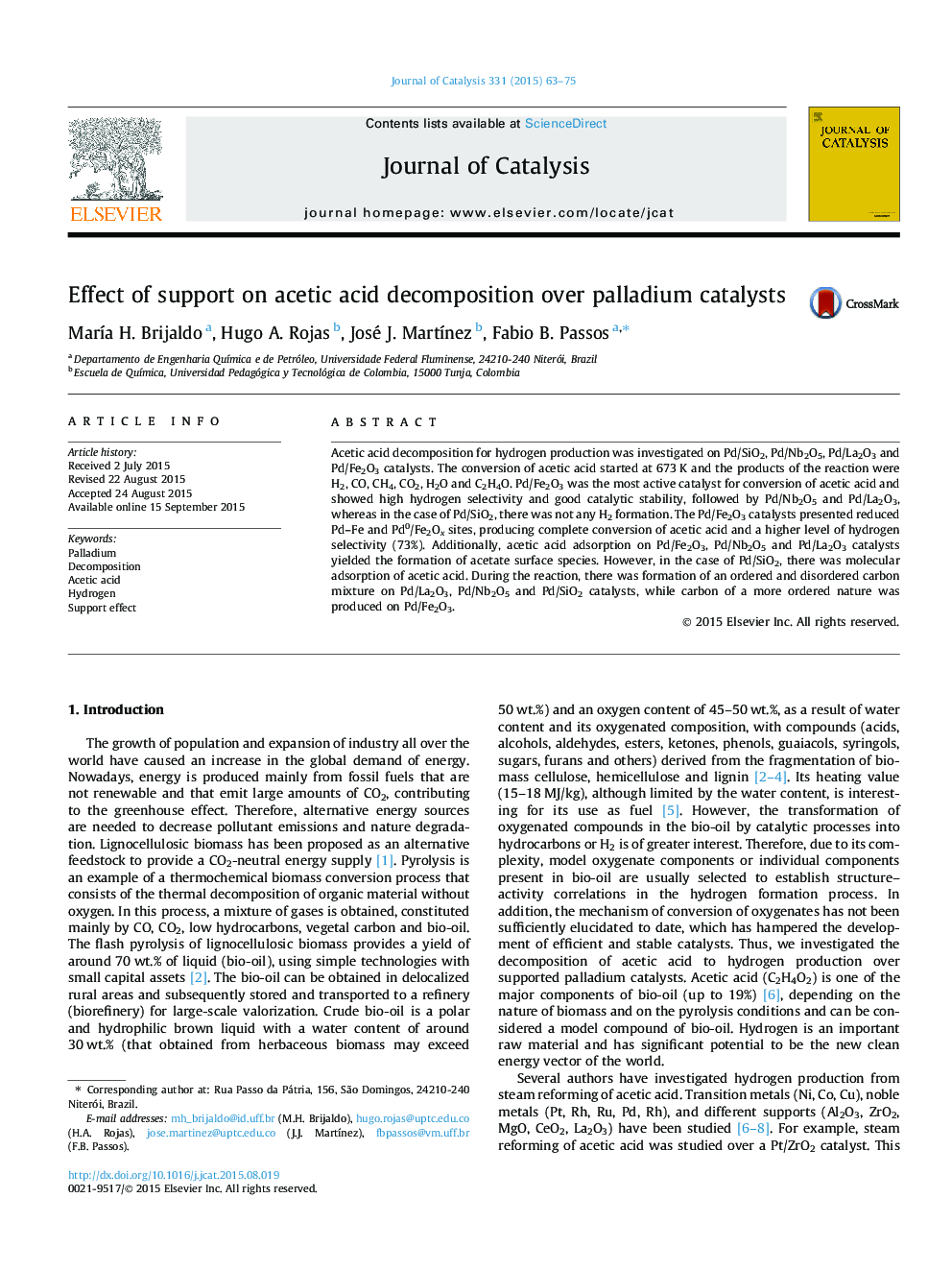| Article ID | Journal | Published Year | Pages | File Type |
|---|---|---|---|---|
| 60697 | Journal of Catalysis | 2015 | 13 Pages |
•C2H4O2 was adsorbed mainly through acetate in bidentate and monodentate modes.•Pd0–Fe0, Pd0–Fe2Ox, Pd0–Nb2Ox and Pd0–La2Ox sites favored H2 production.•Pd0–Fe0 and Pd0–Fe2Ox sites were more active to acetic acid decomposition.•Pd/Fe2O3 favored the formation of highly ordered carbon.
Acetic acid decomposition for hydrogen production was investigated on Pd/SiO2, Pd/Nb2O5, Pd/La2O3 and Pd/Fe2O3 catalysts. The conversion of acetic acid started at 673 K and the products of the reaction were H2, CO, CH4, CO2, H2O and C2H4O. Pd/Fe2O3 was the most active catalyst for conversion of acetic acid and showed high hydrogen selectivity and good catalytic stability, followed by Pd/Nb2O5 and Pd/La2O3, whereas in the case of Pd/SiO2, there was not any H2 formation. The Pd/Fe2O3 catalysts presented reduced Pd–Fe and Pd0/Fe2Ox sites, producing complete conversion of acetic acid and a higher level of hydrogen selectivity (73%). Additionally, acetic acid adsorption on Pd/Fe2O3, Pd/Nb2O5 and Pd/La2O3 catalysts yielded the formation of acetate surface species. However, in the case of Pd/SiO2, there was molecular adsorption of acetic acid. During the reaction, there was formation of an ordered and disordered carbon mixture on Pd/La2O3, Pd/Nb2O5 and Pd/SiO2 catalysts, while carbon of a more ordered nature was produced on Pd/Fe2O3.
Graphical abstractFigure optionsDownload full-size imageDownload high-quality image (269 K)Download as PowerPoint slide
